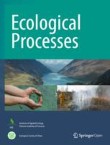Crop diversification analysis on red pepper dominated smallholder farming system: evidence from northwest Ethiopia
Ethiopia is the homeland of various crops due to its diverse and suitable agro-ecological zones. As a result, smallholder farmers grow multiple crops on a small piece of land both for consumption and commercia...
